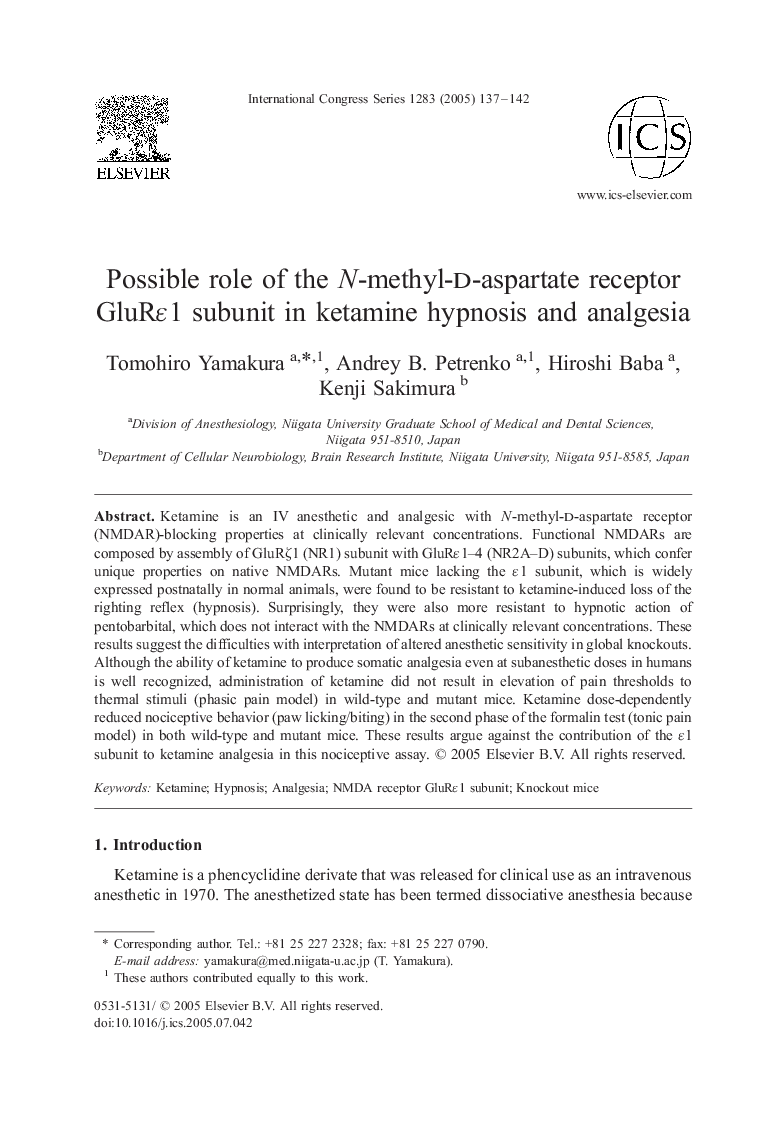| Article ID | Journal | Published Year | Pages | File Type |
|---|---|---|---|---|
| 9021464 | International Congress Series | 2005 | 6 Pages |
Abstract
Ketamine is an IV anesthetic and analgesic with N-methyl-d-aspartate receptor (NMDAR)-blocking properties at clinically relevant concentrations. Functional NMDARs are composed by assembly of GluRζ1 (NR1) subunit with GluRε1-4 (NR2A-D) subunits, which confer unique properties on native NMDARs. Mutant mice lacking the ε1 subunit, which is widely expressed postnatally in normal animals, were found to be resistant to ketamine-induced loss of the righting reflex (hypnosis). Surprisingly, they were also more resistant to hypnotic action of pentobarbital, which does not interact with the NMDARs at clinically relevant concentrations. These results suggest the difficulties with interpretation of altered anesthetic sensitivity in global knockouts. Although the ability of ketamine to produce somatic analgesia even at subanesthetic doses in humans is well recognized, administration of ketamine did not result in elevation of pain thresholds to thermal stimuli (phasic pain model) in wild-type and mutant mice. Ketamine dose-dependently reduced nociceptive behavior (paw licking/biting) in the second phase of the formalin test (tonic pain model) in both wild-type and mutant mice. These results argue against the contribution of the ε1 subunit to ketamine analgesia in this nociceptive assay.
Related Topics
Life Sciences
Biochemistry, Genetics and Molecular Biology
Molecular Biology
Authors
Tomohiro Yamakura, Andrey B. Petrenko, Hiroshi Baba, Kenji Sakimura,
